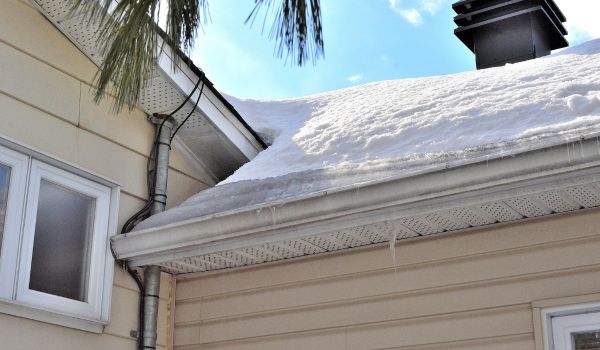

??Wichita's winters can be picturesque, but they also bring a unique set of challenges for homeowners. One of the most common and potentially damaging winter roofing problems is ice damming. Understanding what ice dams are and how to prevent them is crucial for protecting your home and your wallet.
What are Ice Dams?
Ice dams form when snow melts on a warm roof and refreezes at the colder edges, creating a barrier of ice. This ice dam prevents melting snow from draining properly, causing water to back up under the shingles and potentially leak into your home. This can lead to significant damage to your roof, ceilings, walls, and insulation.
Why are Ice Dams a Problem in Wichita?
Wichita experiences temperature fluctuations throughout the winter, with periods of snowfall followed by warmer days. This creates the perfect conditions for ice dams to form. Additionally, many homes in Wichita have attic spaces that are not adequately ventilated or insulated, contributing to heat loss and snow melt on the roof.
How to Prevent Ice Dams on Your Roof
Preventing ice dams requires a multi-pronged approach that focuses on minimizing heat loss from your home and ensuring proper drainage:
1. Improve Attic Insulation
- Increase attic insulation: adequate insulation prevents heat from escaping your living space and warming the roof. Aim for an R-value of at least R-38 (or higher, depending on your home's age and construction) in your attic.
- Seal air leaks: Seal any gaps or cracks around pipes, vents, and light fixtures to prevent warm air from leaking into the attic.
2. Ensure Proper Attic Ventilation
- Intake and exhaust vents: make sure your attic has sufficient intake and exhaust vents to allow for continuous airflow. This helps regulate attic temperature and prevents warm, moist air from accumulating.
- Soffit vents: ensure soffit vents are not blocked by insulation. These vents allow cool air to enter the attic, promoting proper ventilation.
- Ridge vents: consider installing a ridge vent to allow warm, moist air to escape at the peak of the roof.
3. Maintain Your Roof
- Clean gutters and downspouts: clogged gutters prevent water from draining properly, contributing to ice dam formation. Clean your gutters in the fall before the first snowfall.
- Trim overhanging branches: overhanging branches can shed snow and ice onto your roof, increasing the risk of ice dams. Trim branches back to prevent them from touching your roof.
- Inspect your roof: look for missing, damaged, or curled shingles that could allow water to penetrate. Repair any issues before winter arrives.
4. Consider Additional Measures
- Roof rake: use a roof rake to remove snow from the edges of your roof after a heavy snowfall. This helps prevent ice dams from forming in the first place.
- Heated cables: install heated cables along the eaves and valleys of your roof to melt ice and snow and promote proper drainage.
- Ice melt socks: place ice melt socks vertically on your roof to create channels for water to flow through the ice dam.
Recognizing the Signs of Ice Dams
Even with preventative measures, it's essential to be vigilant and recognize the signs of ice dams
- Icicles hanging from the eaves: this is often the most visible sign of an ice dam.
- Ice buildup on the roof edges: look for thick ridges of ice along the eaves and valleys.
- Water stains on ceilings or walls: This indicates that water is leaking into your home from the roof.
- Sagging gutters: the weight of ice and snow can cause gutters to sag or pull away from the house.
What to Do if You Have an Ice Dam
If you discover an ice dam on your roof, it's crucial to address it promptly to prevent further damage. Here are some steps you can take
- Contact a professional: it's best to contact a qualified roofing contractor to safely remove the ice dam. They have the necessary tools and expertise to do so without damaging your roof.
- Do not use sharp tools: avoid using sharp tools like ice picks or shovels to remove ice, as this can damage your shingles.
- Apply ice melt: you can carefully apply calcium chloride ice melt to the ice dam to help melt it. However, be cautious as some ice melt products can damage roofing materials.
- Remove snow: use a roof rake or broom to remove snow from the roof, reducing the amount of water available to freeze.
Read More: Wichita roof repair: a homeowner's guide to common problems in winter damage
Protecting Your Wichita Home from Winter Weather
Taking proactive steps to prevent ice dams is essential for protecting your Wichita home from winter weather damage. By following these tips, you can ensure your roof remains in good condition and prevent costly repairs. Remember, regular maintenance and early intervention are key to keeping your home safe and dry throughout the winter months.
Need help preparing your roof for winter?
Contact Wichita Pro Roofing today for a free roof inspection and expert advice.
We'll help you identify potential problems and implement the necessary solutions to protect your home from ice dams and other winter weather damage.